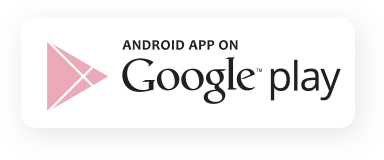Web Scraping in UX/UI Design
Web scraping in UX/UI design can significantly enhance, as well as speed up the design process. Designers can utilize web scraping to gather insights and create modern interfaces, conduct competitive analysis, and streamline content creation.
Utilizing Web Scraping in Design
- User Research and Persona Development: Web scraping aids in collecting data about user behaviors, preferences, and demographics. Furthermore, designers can create more accurate user personas by analyzing a large volume of real-world data extracted from various online sources.
- Competitive Analysis: Scraping competitor websites allows designers to stay updated on industry trends and design innovations. In addition, analyzing competitor interfaces can inspire new design ideas and help in creating a distinctive user experience.
- Content Creation: Scraping content from relevant websites enables designers to curate and present information in a user-friendly manner. Aggregating content ensures the availability of the most up-to-date information, improving the overall UX.
- Data-Driven Design Decisions: Web scraping provides designers with quantitative data, aiding in data-driven decision-making. Analytics from scraped data can guide designers in making informed choices about layout, color schemes, and interactive elements.
- Usability Testing: Scraping user reviews and feedback from various platforms helps designers identify pain points and areas for improvement in existing designs. This data can inform usability testing scenarios, ensuring a more realistic and user-centric evaluation. Beyond automating prototypes, designers can use scraped content to simulate real-world scenarios in testing. This ensures that the design not only looks good but also functions effectively with actual data.
- Content Personalization: Extracting user data through scraping enables designers to create personalized user experiences. Personalization enhances user engagement and satisfaction by delivering content tailored to individual preferences.
- Accessibility Insights: Scraping data related to accessibility features on competitor sites can inform designers about best practices and improvements needed in their own designs. Ultimately, enhancing accessibility leads to a more inclusive and user-friendly design.
- Responsive Design Optimization: Web scraping can provide data on the devices and screen sizes used by the target audience. By doing so, designers can optimize layouts and elements based on real-world usage patterns, ensuring a seamless experience across various devices.
- UX/UI Design & Typography Insights: Scraping data related to color schemes and typography preferences in your target industry can inform design choices. Understanding color psychology, design and font preferences contributes to creating visually appealing designs.
Web Scraping in UX/UI Design: Use Cases
- Web scraping in UX/UI design can be applied across various industries. For example, in e-commerce, designers are instrumental in creating seamless user interfaces. They achieve this by implementing user-friendly product categorization, optimizing checkout processes for enhanced conversion rates, and ensuring engaging shopping experiences through clear and visually appealing product displays.
- Similarly, in the finance and banking sector, UX/UI design plays a crucial role in crafting intuitive dashboards that grant users swift access to financial data. Designers streamline transaction processes by minimizing steps and providing clear instructions, all while maintaining a focus on security measures.
- The travel and hospitality sector benefits from UX/UI design that prioritizes visually appealing and informative booking interfaces. Personalized travel recommendations and user-friendly navigation for exploring destinations contribute to an enriched user experience.
- In education, designers focus on creating intuitive e-learning platforms with clear course structures. They implement progress tracking mechanisms and personalized learning paths, fostering user engagement with interactive and visually appealing educational content.
- Entertainment and media platforms rely on UX/UI design to facilitate content discovery. Designers introduce personalized recommendations based on user preferences, along with interactive features and seamless streaming experiences to enhance user engagement.
- The tech industry emphasizes intuitive interfaces for software and product applications. Responsive designs that adapt to various devices and prioritizing user feedback for continuous improvements contribute to overall user satisfaction.
- In real estate, designers create intuitive property search interfaces with filters catering to user preferences. Virtual property tours and interactive maps enhance the user experience, and streamlined transaction processes with clear and user-friendly forms facilitate smoother interactions.
- The food and beverage industry relies on UX/UI design for visually appealing and easy-to-navigate menus. Designers implement seamless online ordering and delivery experiences, coupled with personalized recommendations based on user preferences, to elevate user engagement.
Across these diverse industries, UX/UI designers leverage their skills to ensure that digital platforms are not only aesthetically pleasing but also functionally efficient. By understanding the unique needs and preferences of users, they contribute to enhanced satisfaction, increased engagement, and overall business success. Reach out to us for more information and pricing of our web scraping solutions.


